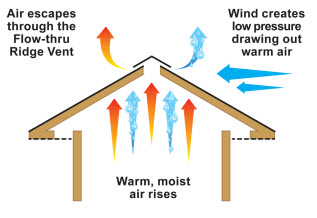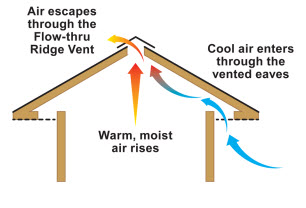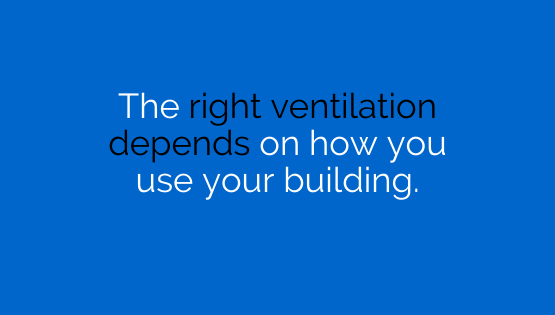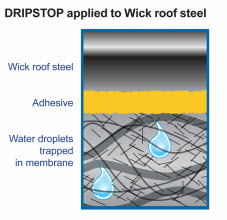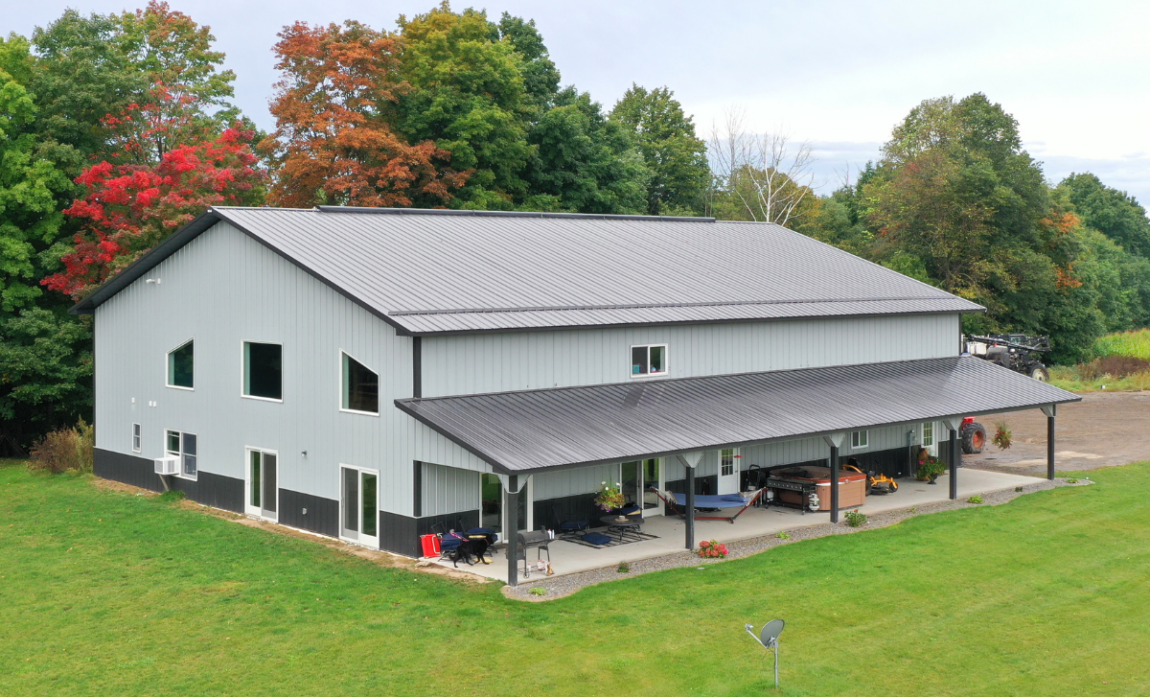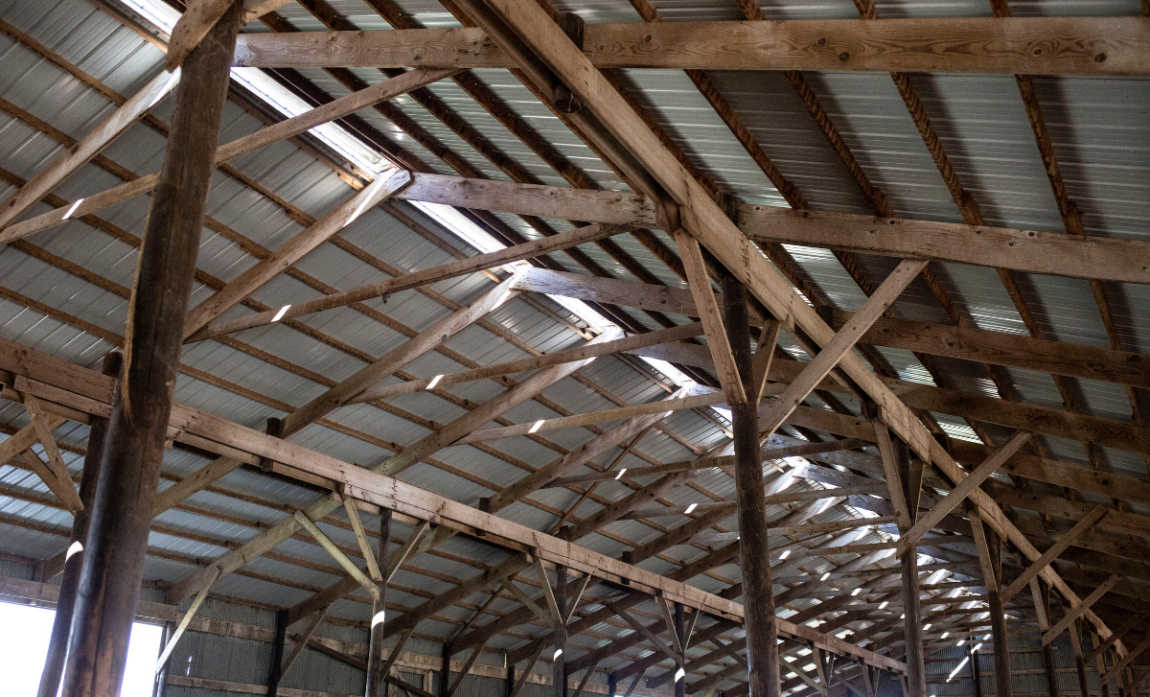For your post-frame, or pole barn, building to function properly, it needs to be more than just a building. It should be a complete system that’s engineered and built to help ensure good indoor air quality. In the following, you’ll learn why the key to achieving this is pole barn ventilation.
Air quality is a critical factor for the well-being of a post-frame building itself, as well as all the things that could go inside it – from vehicles and equipment, to livestock and horses, to you and your family.
Taking steps to ensure good air quality in your post-frame building will, among other benefits, keep it cooler on hot days, prevent moisture from dripping on you and your things, and help you stay safer and more comfortable when you’re in it.
So how can you help create good indoor air quality? It all comes down to controlling the airflow with a suitable pole barn ventilation system. Let’s examine the essentials for ventilation and explore what system may be right for you.
Ventilation 101: Outflow and Inflow
To understand how proper ventilation works, here’s the anatomy of a basic passive pole barn ventilation system.
Vented ridges: Out with the Moist, Stale Air
The process starts with warm, moist air rising inside your pole barn. (In the case of a lined building with a ceiling, air is rising in the building’s attic.)
As the diagram shows, thermal convection – basically the movement of heat through fluid motion – causes the air to escape through a ridge vent. (We provide our customers with a cost-effective Flow-thru Ridge Vent as standard, with a variety of options should the building require more ventilation.)
Note that wind hitting the roof can actually aid this process by creating low pressure, which further draws out the warm air through the ridge vent.
Vented eaves: In with the cooler, fresh air
When that warm, higher humidity air escapes through the ridge vent, it creates negative air pressure inside the building.
And that’s when vented eaves come into play.
Vented eaves are the yin to a vented ridge’s yang. They enable the negative air pressure to draw in cooler, lower humidity air from outdoors. (Other openings, such as doors and windows, can facilitate the process.)
Voilà: That’s post-frame ventilation in a nutshell.
Striking a balance between outflow and inflow
Not surprisingly, one-size-fits-all ventilation isn’t the best solution. For the most effective ventilation performance, you need to strike a balance between the outflow and inflow of air. And that requires careful consideration.
You want to make sure you have the right ventilation for the type of building you have – and for what you have in it. Your building designer should be able to calculate your building needs to achieve optimal inflow and outflow.
You can also contact your local Wick Builder to have your building’s ventilation needs calculated.
When do you need more than a conventional passive ventilation system?
The basic ventilation system described above can work great for many types of pole barn buildings. There are, however, scenarios where you may need more ventilation. Here are some common examples:
Curing new concrete. New concrete will release moisture during the curing period. A general rule of thumb is that it takes one to two months of drying time per inch of concrete pad, depending on humidity levels and temperature.
Washing equipment. Frequently washing equipment or vehicles inside a post-frame building will add moisture to your air and create a need for more ventilation. Concrete is porous and will retain water, even if you have floor drains and your doors are open while you’re washing.
Storing materials that off-gas. If you store chemicals like fertilizer or other off-gassing substances in your enclosed building, you need increased ventilation.
Using chemicals. Using spray paint, high-strength cleaning materials, or other strong chemicals demands a high-ventilation environment.
Housing animals. When large animals like livestock and horses breathe, sweat, and generate waste, you’re going to have higher levels of moisture and odor and thus a greater need for more ventilation to improve air quality.
Using as a living space. If you plan to work or live – or just spend a lot of time – in your post-frame, you’ll need additional ventilation. In fact, commercial and residential building codes specify the amount of “air turns” needed in a human-occupied space to ensure adequate air quality for maintaining good health.
What options are available if you need more ventilation?
If you do need more ventilation, there are a number of possibilities, ranging from higher volume passive ventilation options to various powered ventilation systems.
Passive ventilation options
Open ridges. These are used with higher density livestock housing and maximize the passive air flow through the ridge area. However, Mother Nature could send rain and snow through the open ridge, so make sure your building is designed properly.
RV-35 and RV-100 ridge vents. These industry-standard higher profile passive vents provide a larger volume of air flow through your ridge, yet still provide weather protection.
Vented cupolas. A vented cupola sits on top of a roof ridge and can be used in conjunction with other ridge venting systems.
Gable vents. These are located high on the gable wall in the attic area, ideally on both ends of your building, to allow air to flow in and out of your building.
Powered ventilation options
Attic fans or ventilators. Mounted either in a gable wall with opening and closing shutters or under a covered vent in the roof, they can move a lot of air and can be triggered by temperature or humidity levels.
Power vented cupolas. These electric fans mount in the cupola and can also be triggered by temperature or humidity levels.
Exhaust fans. Similar to the common bathroom fan, these can be used to remove moisture, vapor, or odors from interior spaces or rooms under the attic. Use the appropriate filtering system for the type of exhaust you are removing.
Air exchangers. This option is commonly used in residential and commercial environments when you are exchanging interior air that is heated or cooled.
When moist air meets a cold roof: a special note on condensation
When temperature and humidity conditions reach the dew point, moisture condenses on the underside of a non-insulated metal roof. And when there’s a lot of condensation, drops of water form and start to fall, potentially damaging whatever contents lie below.
The traditional method for combating condensation is to insulate the roof so that the temperature on the inside roof panel never reaches the dew point.
However, there are simpler, more economical solutions. If you don’t plan on insulating your entire building, you’ll want to consider installing some type of condensation control system on the underside of your roof.
For example, Wick Buildings offers the DripStop condensation control membrane, which arrives at your building site already in place and installed with the roofing panels. (The membrane is self-adhering and is applied to the panels in the pre-construction phase.)
Proper ventilation means peace of mind
If you need a post-frame building in the first place, then you need good ventilation. No matter what goes in — and what goes on — in your building, the fundamentals of proper pole barn ventilation should apply.
So whether you’re taking the DIY route or using a builder, be sure you identify all the ways you’ll be using your building. Then plan accordingly for the appropriate ventilation system. Ultimately, when your building can breathe easier, so can you.

